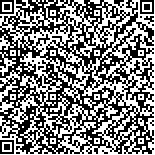| 引用本文: |
李莉华,王忠民.卵巢残余综合征临床辨证施治探讨[J].湖南中医药大学学报,2019,39(8):960-963[点击复制] |
|
| |
|
|
| 本文已被:浏览 2715次 下载 1281次 |
| 卵巢残余综合征临床辨证施治探讨 |
| 李莉华,王忠民 |
| (天津市北辰医院内分泌科, 天津 300400;天津市北辰医院中医妇儿科, 天津 300400) |
| 摘要: |
| 卵巢残余综合征系妇科疑难病。双侧卵巢切除后再次出现诸如盆腔疼痛、腹部包块、会阴痛、性交痛等临床症状,与中医气滞血瘀、肝郁气滞、寒湿凝聚、气血亏虚等有内在联系。根据其脉证,分别采用理气止痛,疏肝理气,温经散寒,补气养血之法,佐以活血化瘀,可有效缓解患者病情,改善症状,提高临床疗效。 |
| 关键词: 卵巢残余综合征 辨证论治 疏肝理气 温经散寒 补气养血 |
| DOI:10.3969/j.issn.1674-070X.2019.08.007 |
| 投稿时间:2018-06-28 |
| 基金项目: |
|
| Discussion on Clinical Syndrome Differentiation and Treatment of Ovarian Residual Syndrome |
| LI Lihua,WANG Zhongmin |
| (Endocrinology Department of Tianjin Beichen Hospital, Tianjin 300400, China;Traditional Chinese Medicine Gynecology Department of Tianjin Beichen Hospital, Tianjin 300400, China) |
| Abstract: |
| Ovarian residual syndrome belongs to the gynecological difficult problem. After bilateral ovariectomy, clinical symptoms appeared, such as pelvic pain, abdominal mass, perineal pain and pain during intercourse, etc. It has internal relations with TCM Qi stagnation and blood stasis, stagnation of liver Qi, cold-dampness aggregation, Qi and blood deficiency and so on. According to the pulse syndromes, the methods of regulating Qi and relieving pain, soothing liver and regulating Qi, warming collateral and dispersing cold, nourishing Qi and blood, combined with activating blood and removing blood stasis, and it can effectively alleviate the patient's condition, improve symptoms and clinical efficacy. |
| Key words: ovarian residual syndrome syndrome differentiation soothing the liver and regulating Qi warming channel for dispelling cold benefiting Qi and nourishing blood |
|

二维码(扫一下试试看!) |
|
|
|
|




